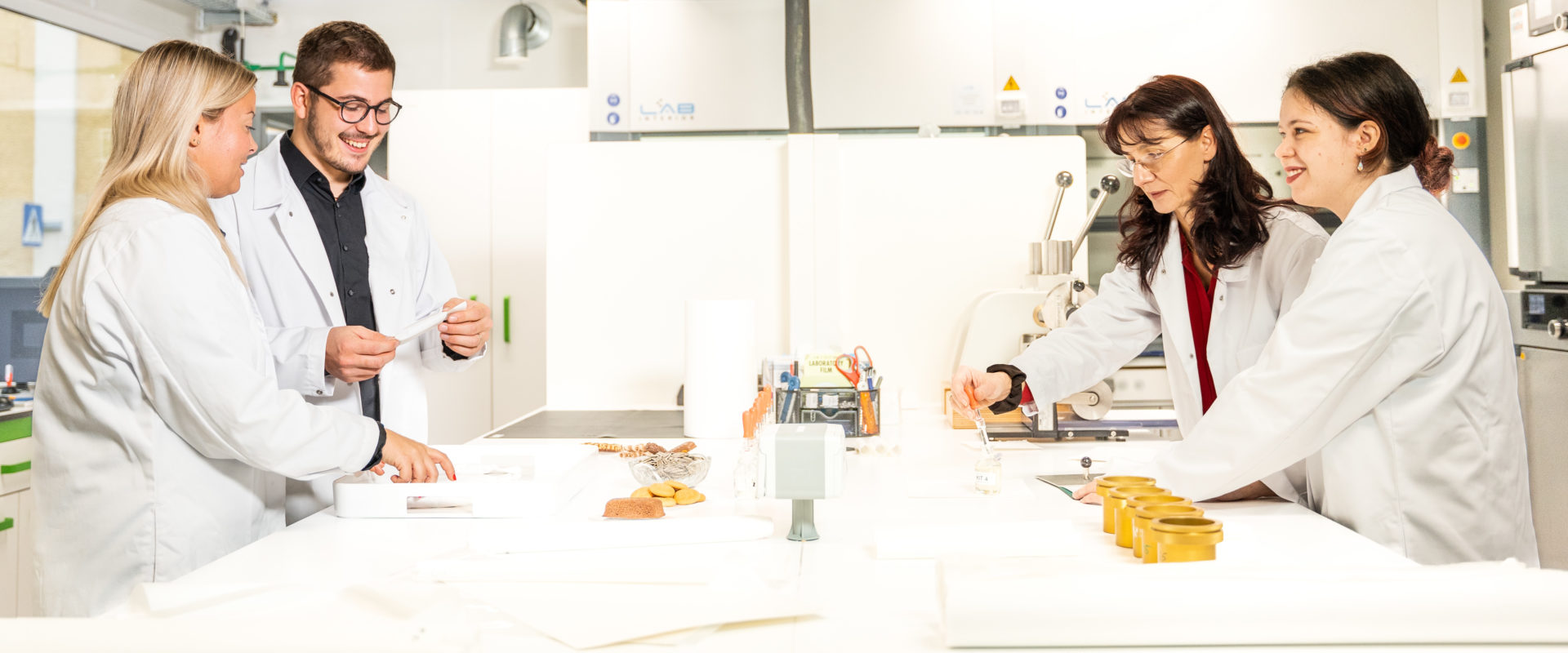
In our commitment to responsible product design, we actively strive to enhance both the environmental performance and functionality of specialty paper packaging. Collaborating closely with our R&D partner DELSCI, we are at the forefront of developing the next generation of recyclable packaging solutions.
Crafting functional and recyclable packaging solutions from paper represents a pivotal yet challenging stride toward a more sustainable future. We leverage science, collaboration, and innovation to engineer some of the market's premier recyclable paper packaging solutions. Moving beyond packaging choices, the journey to a more sustainable future is multifaceted. As packaging often marks the initial interaction between consumers and businesses, it plays a critical role with lasting effects on both consumer perceptions and the environment. The material you select to package your goods speaks volumes about your brand vision and product quality.

recycling rates for paper are the highest in the world
Fiber-based packaging emerges as a sustainable and circular solution, significantly reducing landfill waste. Paper, inherently circular, is primarily made from renewable ingredients and boasts one of the highest global recycling rates. In Europe, paper fibers are recycled and re-used an average of 3.8 times[1].
Understanding recyclability on a global scale requires acknowledging differing definitions and testing requirements across geographic regions. As a global company operating in over 100 countries, we diligently track and comprehend these variations in recyclable packaging definitions and testing requirements.
Global recycling rates underline a crucial distinction – while products made from various materials can be recycled, actual recycling rates vary significantly. Plastic waste, for instance, faces challenges in collection and sorting, resulting in a lower global recycling rate. In contrast, the recycling rates for paper in both the United States and the European Union surpass those of plastic.

consumers perceive paper as sustainable
Consumer preferences align increasingly with sustainability, with packaging choices influencing purchasing decisions. Research indicates that consumers perceive paper as a more environmentally friendly alternative to plastic, with some willing to pay extra for sustainably sourced products and packaging. A European consumer preferences survey, commissioned by Two Sides in 2020[6] concluded the following:
global recycling regulations for packaging
As the urgency for circular packaging grows, policymakers implement ambitious targets and regulations globally. In the European Union, the Circular Economy Package aims for all packaging to be reusable or recyclable by 2030. California and Australia are enacting stringent measures, demanding full recyclability or compostability for disposable packaging by 2032 and 2025, respectively.
recyclability is a key to responsible product design
At delfort and DELSCI we strongly support the ambitious measures to drive the shift to a circular economy for packaging. We support these efforts by providing the market with recyclable packaging with functional barriers. We are creating the next generation of recyclable lightweight paper packaging through continuous investment, innovation, and collaboration. Our focus is on lightweight barrier paper solutions that provide the necessary performance against oxygen, aroma, mineral oil hydrocarbons, fat, and water vapor.
Designing smart paper that’s more powerful than ever before, yet still affordable, requires innovations at every stage of the process. We are fully committed, along with our R&D partner DELSCI, to design and produce lightweight barrier papers for food and non-food packaging. Recyclability is one important element of our responsible product design along with ensuring our specialty papers are fit for:

about delsci
DELSCI is a research organization that invents eco-conscious paper for food and non-food packaging. We’re a team of scientists and technologists on a mission to empower people to consume responsibly. This means replacing plastic (wherever possible) with functional paper that works harder than ever before and helps protect the environment and keeps our oceans free of plastic.

Interested in switching to function paper packaging?
We would love to hear from you!
Kirchberger Herwig, Managing Director · DELSCI
Herwig.Kirchberger@delsci.com I +43 7229 776-552
let's collaborate!
We practice open innovation and collaboration. We invite potential partners who share our vision to contact us.
Inventing and revolutionizing paper products is our passion. Together with you, we will find and create the paper that perfectly meets your functional needs.
Let's make creative collaboration happen.
MORE INTERESTING CONTENT FOR YOU
[1] https://www.twosides.info/UK/environmental-benefits-of-paper-recycling/#:~:text=Paper%20is%20highly%20recycled%20and,a%20new%20sheet%20of%20paper.
[2] https://www.oecd.org/environment/plastic-pollution-is-growing-relentlessly-as-waste-management-and-recycling-fall-short.htm
[3] https://www.weforum.org/agenda/2022/06/recycling-global-statistics-facts-plastic-paper/
[4] https://www.cepi.org/wp-content/uploads/2022/09/DRAFT_EPRC-Monitoring-Report-2021_20220909.pdfhttps://www.afandpa.org/news/2022/unpacking-continuously-high-paper-recycling-rates
[5] https://www.forbes.com/sites/woodmackenzie/2020/08/24/is-paper-a-more-sustainable-flexible-packaging-material-than-plastic/?sh=5b86b28912d4
[6] https://www.twosides.info/packaging2020/
[7] https://ec.europa.eu/commission/presscorner/detail/en/ip_22_7155
[8] https://www.packaginglaw.com/special-focus/californias-policy-push-litany-laws
[9] https://www.dcceew.gov.au/environment/protection/waste/plastics-and-packaging/packaging-covenant





